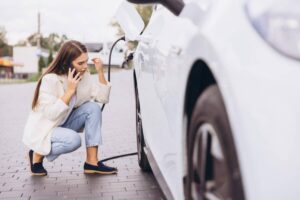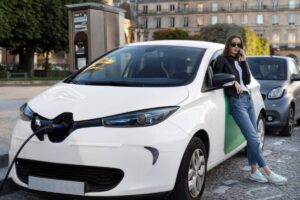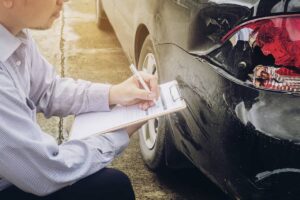The Automobiles & Vehicles Blog

How to Plan Road Trips in an EV with Charging Stops
A road trip in an electric vehicle doesn’t mean limiting your journey—it means reimagining the rhythm of the road.
Our team found that EV drivers who plan their routes with smart charging strategies enjoy smoother journeys, avoid range anxiety, and even discover hidden gems along the way. Unlike traditional road trips where you fill up anywhere, electric travel requires a bit more intention. But with today’s expanding charging networks and planning tools, road-tripping in an EV is not only doable—it can be incredibly enjoyable.
This guide will show you how to plan an electric road trip from start to finish, including how to map charging stops, calculate range, and make the most of your time between charges.
Pro Tip: EV road trips are less about speed and more about flow—embrace the pauses, and the journey becomes the destination.
Quick Guide: EV Road Trip Planning with Charging Stops
- Know your EV’s real-world range and charging capabilities.
- Use EV trip planners to map out charging stops.
- Choose charging stations with reliable ratings and amenities.
- Plan for buffer time and alternate routes.
- Optimise charging stops with meals or sightseeing.
- Bring charging essentials like cables, apps, and RFID cards.
- Monitor battery health and charge levels in real time.
Important: An EV road trip requires pacing and preparation—but when done right, it turns every stop into part of the experience.
Step 1: Understand Your EV’s Range and Charging Speed
Start by knowing the realistic range of your vehicle—not just the advertised figure.
Check:
- Usable battery capacity (some EVs limit access to preserve battery life)
- Typical highway efficiency (kWh/100 km or mi/kWh)
- Max DC fast charging speed (e.g. 100 kW, 250 kW)
- Time to 80% charge at full speed
- Cold weather range impact (can reduce range by up to 30%)
Planning Tip: Stick to 70–80% of your full range between stops for optimal charging speed and battery health.
Step 2: Use an EV Trip Planner
Forget Google Maps alone. EV-specific route planners account for elevation, real-time traffic, charger types, and charging durations.
Top Tools:
- A Better Routeplanner (ABRP): Comprehensive, real-time routing tailored to your EV
- PlugShare: Station finder with user reviews and live status
- Zap-Map (UK) / Chargemap (EU): Excellent for regional planning
- Tesla Navigation: Built-in system with Supercharger routing
- ChargePoint or Ionity apps: For booking or locating specific network chargers
Key Features to Use:
- Add planned stops or detours
- Customise charging thresholds (e.g. stop at 10%, charge to 80%)
- View alternate routes and contingencies
Step 3: Choose the Right Charging Stations
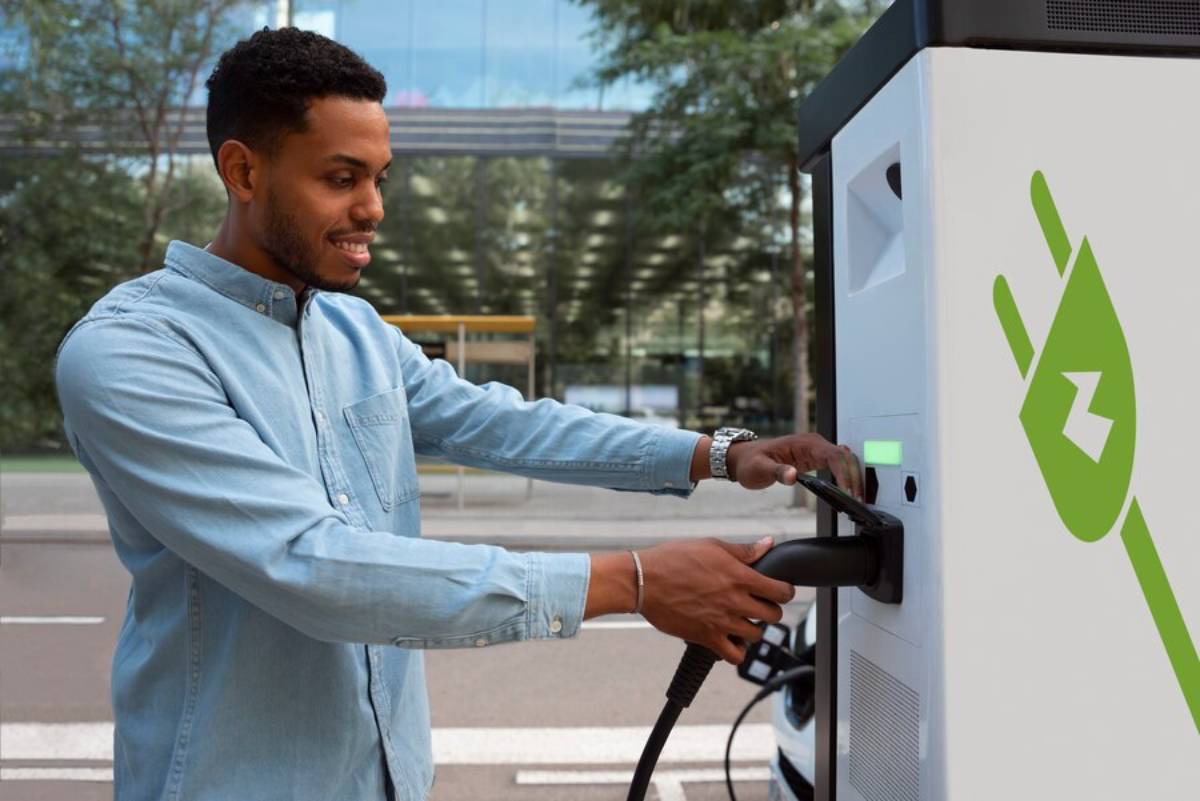
Not all charging stops are created equal. Look for:
- Reliable brands (e.g. Tesla, Ionity, Fastned, ChargePoint, EnBW)
- Fast chargers (DC) vs. slower AC chargers
- Stations with amenities—cafés, restrooms, shaded seating
- 24/7 access and lighting for overnight drives
- Positive user reviews—filter for verified experiences and uptime
Charging Speed Comparison:
| Charger Type | Power Output | Typical Use | Time to 80% |
| Level 1 (Home) | ~2 kW | Emergency only | 20+ hrs |
| Level 2 (AC) | 7–22 kW | Overnight or destination charging | 4–8 hrs |
| DC Fast | 50–150 kW | Most public networks | 30–60 mins |
| Ultra-Fast (HPC) | 150–350 kW | Premium models & networks | 15–30 mins |
Tip: Don’t wait to charge at 0%. Plan to recharge with 10–20% remaining, especially in rural areas.
Step 4: Space Your Stops Strategically
For a smooth journey, space charging stops around 200–250 km apart, depending on your EV and driving conditions.
Things to Factor:
- Elevation gain = more battery usage
- Highway speeds = faster drain
- AC/heating use = reduced range
- Weather and headwinds = 10–15% extra consumption
Add a buffer of 10–15% battery in case of delays, traffic, or inoperative chargers.
Step 5: Time Your Stops With Activities
Charging is no longer just “downtime”—it’s an opportunity.
Combine Stops With:
- Lunch or coffee breaks
- Sightseeing or nature walks
- Shopping or local markets
- Working remotely at a café with Wi-Fi
- Hotel charging while you sleep (ideal for overnight journeys)
Pro Tip: Use “destination chargers” at hotels, Airbnb properties, and restaurants that offer Level 2 charging while you relax.
Step 6: Pack Your Charging Essentials
You don’t want to discover you’re missing a cable halfway through your trip.
Bring With You:
- Charging cables (Type 2, CCS, CHAdeMO, depending on your EV)
- RFID cards or app access for charging networks
- Mobile charger / adapter for emergencies
- Power bank and EV app logins
- Gloves and mat for cold-weather or rainy day charging
- Printed backup directions if signal is poor in remote areas
Must-Have Apps: ABRP, PlugShare, your vehicle’s native app, and your preferred charging provider’s app.
Step 7: Monitor Range and Adjust as You Go
Even the best-laid plans may need tweaking.
In Real Time:
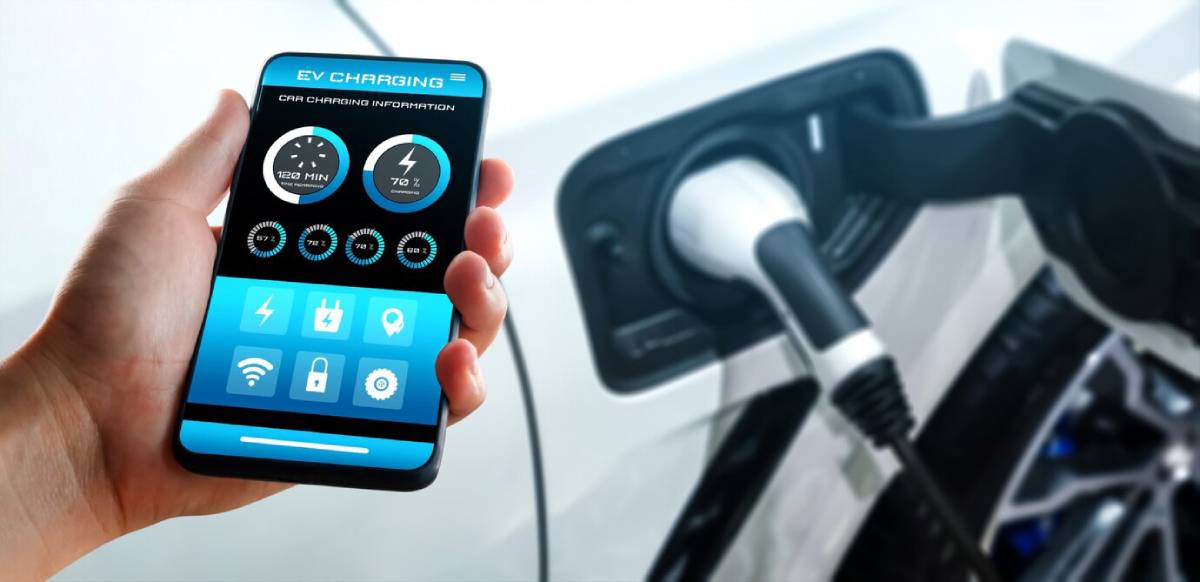
- Track state of charge (SoC) via your EV’s dashboard or app
- Use eco modes or reduce speed if range becomes tight
- Enable regen braking in stop-start traffic or downhill segments
- Use your planner’s “live adjustment” features if conditions change
Backup Plan: Have 1–2 alternate chargers along your route as a safety net—especially in rural or mountainous areas.
Best EV-Friendly Road Trip Routes (2025 Picks)
| Region | Route | Highlights |
| USA | Pacific Coast Highway (CA) | Ocean views, Tesla Supercharger-rich |
| UK | North Coast 500 (Scotland) | Scenic, remote, growing charger network |
| Germany | Romantic Road | Historic towns, Ionity coverage |
| France | Loire Valley | Wine country, Tesla and Chargemap access |
| Norway | Oslo to Bergen | Fjords, tunnels, EV paradise |
Warning: Don’t rely on a single charging network or assume chargers will be free. Always check availability, cost, and reviews in advance.
Frequently Asked Questions
1. Can I road trip in an EV with kids or pets?
Absolutely! Just plan stops around rest-friendly chargers with food, facilities, and green space.
2. How do I avoid range anxiety on long trips?
Use trusted planning tools like ABRP, keep a buffer, and don’t cut it close. Charging infrastructure is improving fast—especially along major routes.
3. Can I charge at night at a hotel?
Yes—many hotels now offer Level 2 chargers. Look for listings with EV-friendly tags on booking sites or apps like PlugShare and Booking.com.
4. Do all EVs charge at the same speed?
No. Charging time depends on your EV’s max charge rate and the charger’s output. A 350 kW charger won’t help if your car is capped at 125 kW.
5. Should I fully charge at every stop?
Not necessarily. EVs charge fastest from 10% to 80%. After that, speed drops. For most road trips, frequent partial charges are more efficient.
Travel Farther, Smarter, and Cleaner
With the right planning, EV road trips are no longer a novelty—they’re a new normal. Charging stops become part of the journey, offering breaks, discovery, and rhythm.
By understanding your EV, mapping stops intentionally, and embracing the pace, you’ll experience the road in a more relaxed, connected way. So charge up, set your route, and enjoy the silence between the scenery.




